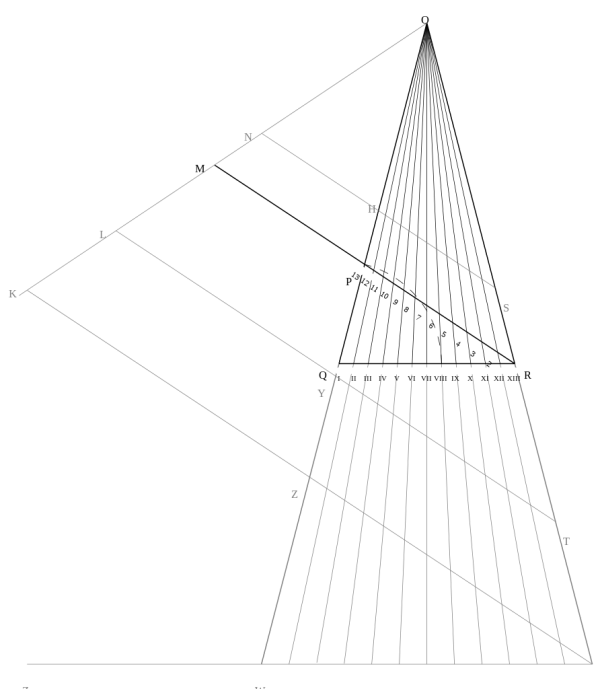In 1743, Swedish organ maker Daniel Stråhle published this method to calculate the sounding lengths of strings in a musical tuning with 12 pitches per octave that’s close to equal temperament. Draw segment QR 12 units long and establish it as the base of an isosceles triangle with sides of length 24. Find point P on OQ seven units above Q and draw a line through it from R to M such that PM = RP. Now MR is the string length of the lowest sounding pitch, MP is the pitch one octave higher, and the points labeled 2 through 12 give the endpoints for successive semitones within the octave.
Stråhle, who had no mathematical training, said he’d established the method after “some thought and a great number of attempts.” Exactly how he came up with it is not known.

